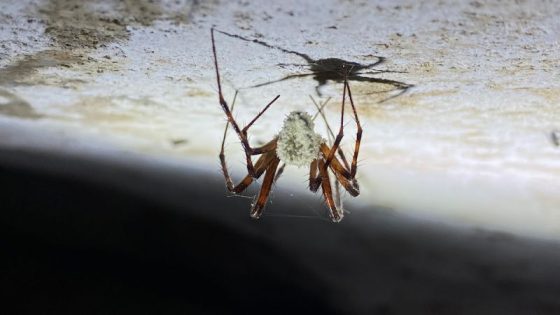Scientists have discovered a fascinating new species of fungus, Gibellula attenboroughii, that turns cave-dwelling spiders into “zombies.” This remarkable finding, published in January 2025, raises intriguing questions about how fungi can manipulate animal behavior. What does this mean for our understanding of nature?
- New fungus species manipulates cave spiders' behavior.
- Named Gibellula attenboroughii, it spreads spores.
- Research opens opportunities for studying fungi.
- Observations reveal unique spider infection patterns.
- Potential applications in medicine and agriculture.
- No threat to humans from this fungus.
New Zombie Fungus Discovered in Cave-Dwelling Spiders: What You Need to Know
What if a tiny organism could control the behavior of a spider? The newly discovered Gibellula attenboroughii does just that. Found in European caves, this fungus manipulates spiders to leave their webs, ultimately leading to their demise. How does this impact the ecosystem and our understanding of fungal behavior?
Understanding the Impact of Gibellula attenboroughii on Ecosystems
The discovery of Gibellula attenboroughii opens up new avenues for research into how fungi affect animal behavior. This fungus is part of a larger group that specifically targets spiders, showcasing the complex relationships in nature. Here are some key points:
- Gibellula attenboroughii infects cave-dwelling spiders, altering their behavior.
- This fungus spreads its spores using the spiders’ bodies after death.
- It raises questions about the evolutionary pathways of parasitic fungi.
- Further research could reveal potential benefits for agriculture and medicine.
How Does the Fungus Manipulate Spider Behavior?
Researchers are still unraveling the mystery of how Gibellula attenboroughii affects the brains of its spider hosts. The fungus appears to lure spiders out of their webs, exposing them to air currents that help spread its spores. This manipulation is not just a survival tactic; it demonstrates a unique form of behavioral control in the fungal kingdom.
Potential Applications of Fungal Research in Medicine
The insights gained from studying Gibellula attenboroughii could have far-reaching implications. Understanding how this fungus alters spider behavior might lead to breakthroughs in treating human diseases, such as Alzheimer’s. The metabolites released by the fungus could inspire new therapeutic approaches, showcasing the potential of nature in medical science.
The Broader Implications for Biodiversity and Ecology
With around 150,000 known species of fungi, scientists believe this only scratches the surface of fungal diversity. The discovery of Gibellula attenboroughii highlights the importance of studying lesser-known organisms to understand ecological balance. Fungi play crucial roles in ecosystems, and their interactions with other species can help maintain environmental health.
In conclusion, the discovery of Gibellula attenboroughii not only fascinates but also challenges our understanding of nature’s complexities. As researchers delve deeper into this fungal behavior manipulation, we may uncover more secrets about the interconnectedness of life on Earth.

































